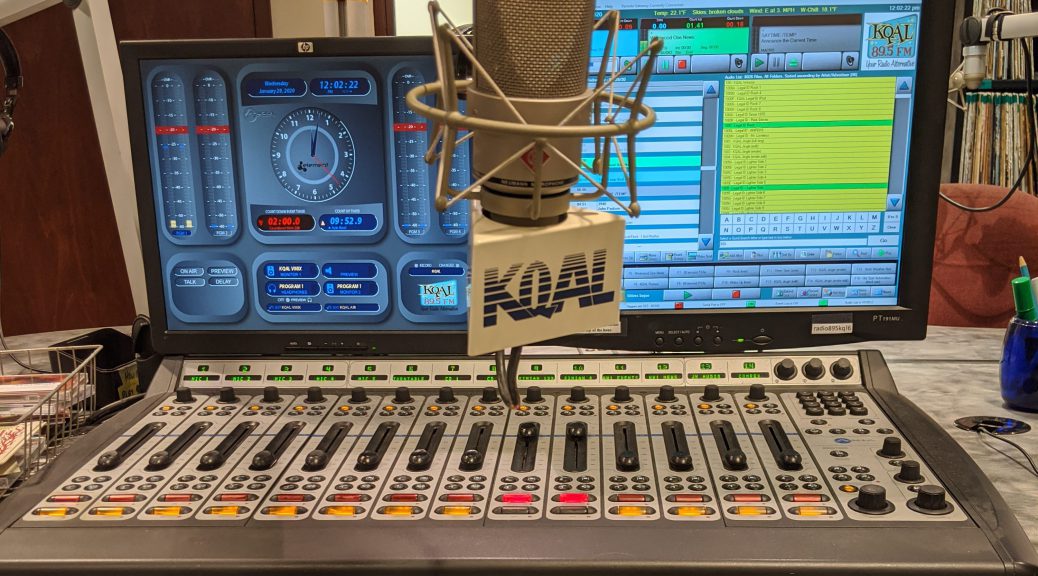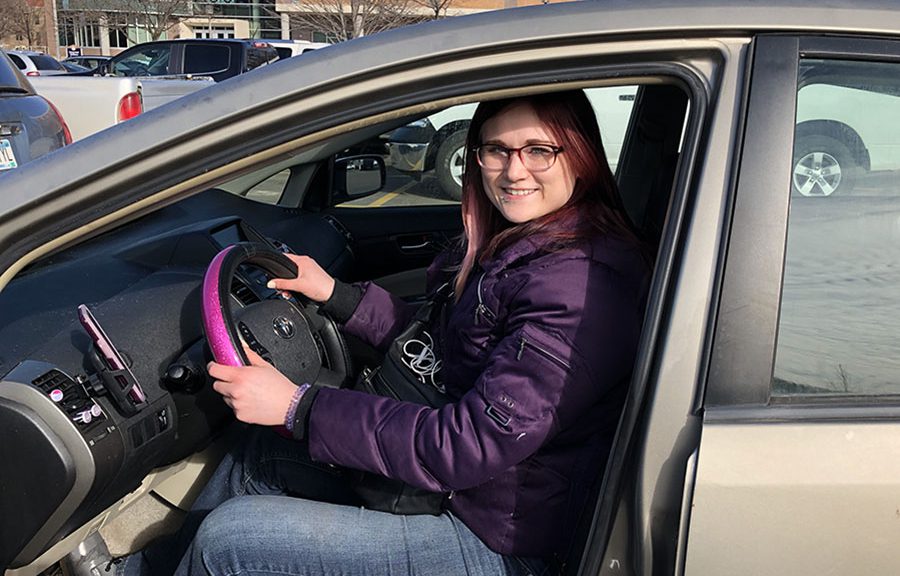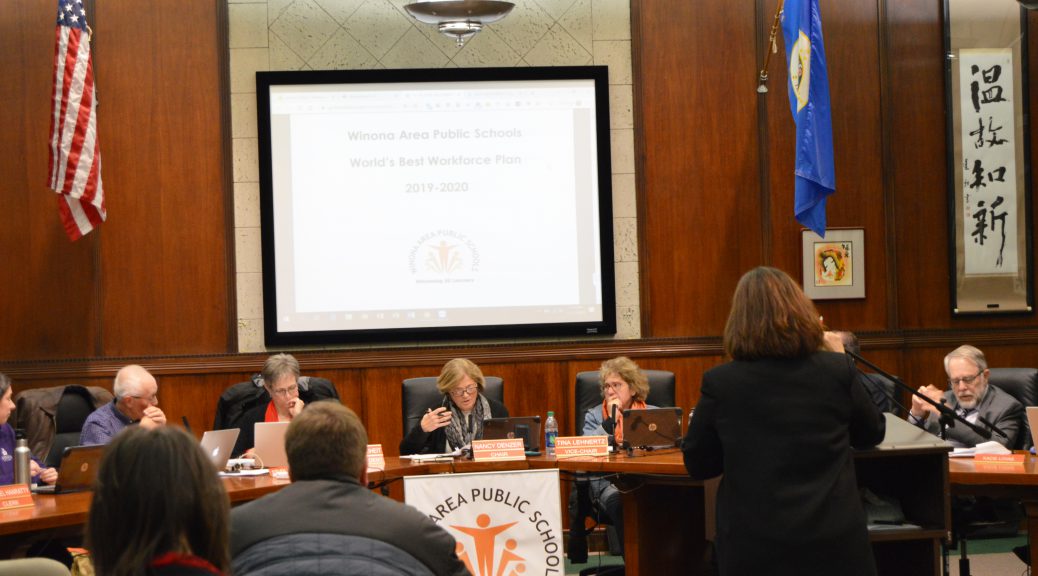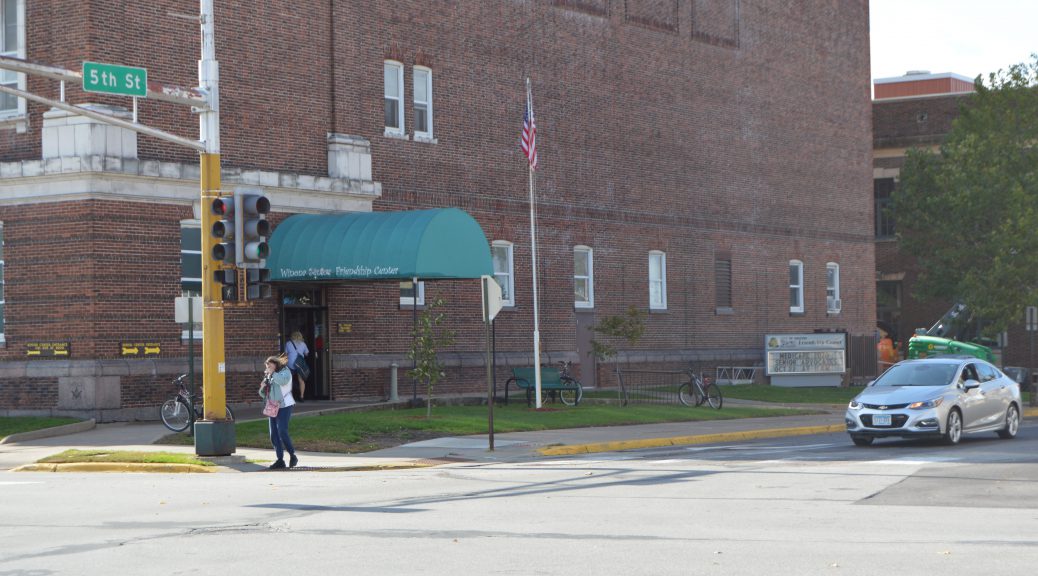A documentary film by Alek LaShomb
Category Archives: Local
Love of Local History Week
The Winona County Historical Society held a week-long event to celebrate Valentine’s Day by showing its love of Winona’s local history.
The event included free admission to see WCHS exhibits all week, games at the center including artifact bingo and a heart scavenger hunt, plus kits to take home and make vintage Valentine’s Day cards.
Carrie Johnson, WCHS executive director, said in the past the center offered behind-the-scenes tours, crafts for children, treats, and music.
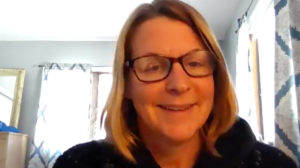
Due to COVID-19 limitations, the event had to be changed to follow safety guidelines.
“The event was a modification to what has been previously held,” Johnson said. “Traditionally we hold a Valentine’s Day weekend open house with free admission on a larger scale.”
Johnson said WCHS still wanted to hold the event since it gave people something to do and possibly bring new visitors to the center.
“The event helps increase our visibility to people who might not normally come in,” Johnson said. “Offering things to the public makes you relevant and it would be a shame to keep all this history locked up in a vault.”
Jennifer Weaver, WCHS’s museum educator, said attendance for the event was good with several hundred people showing up throughout the week.

“Typically, we see anywhere from 300 to 600 people come for the open house day,” Weaver said. “I definitely think we reached that number throughout the week.”
Weaver also said the exhibits on display were special to the staff since they all picked some favorite artifacts from the vault to showcase.
A couple from Winona State University, Rickey Marshally and Sulaiman Bada visited the WCHS and explored the exhibits.

“My roommate told me about the event,” Marshally said. “As an international student, I’m always looking to learn more about Winona and Minnesota.”
Marshally said she brought Bada along so she would have company and a ride.
Bada admitted he did not know a museum actually existed in town but was glad to know about it and visit.
“My favorite exhibit would have to be up at the top with the Native American equipment and the dolls,” Bada said. “I would also say the different fire equipment and carts since the firefighters actually had to pull those huge things on their own.”
The couple said it took them about an hour and a half to explore both floors of the museum, and along the way, they searched for hidden hearts that were part of the seasonal promotion.
“My favorite exhibit would have to be the pharmacy and the bank,” Marshally said. “They were small sets where you could actually see what the inside really looked like.”
The couple said they had fun and would go back next year if things are safe again.
“Hopefully, by next February we’ll mostly be vaccinated, and it will be safer to do the event in person again,” Weaver said.
Winona New Jail
For decades America has had a problem with mass incarceration.
The Winona County jail is dealing with multiple violations which is why the community is pushing to build a new one.
Chris Meyer the District One Commissioner for Winona County is in favor of building a new jail.
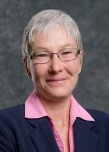
Meyer said, “the jail was condemned, and we’re replacing it.
She also said the current jail, “it is simply not safe for anyone, not for the community, not the individuals arrested and certainly not our jail staff”.
Meyer also said the jail has failed state inspections due to narrow doorways, no sprinkler systems, only one intake stall, pod structure and other safety and health concerns.
When comparing Winona County’s current jail and the plan for the new jail, especially in concerns with COVID-19, Meyer said, “It will have a negative airflow system, and it will also have the ability to separate folks in a way that is simply not possible now.”

A local coalition Community not Cages opposes the new jail.
Tova Strange, a member of Community not Cages, and Winona State University student, said the group is composed of current and past Winona residents who disagree with the jail expansion.
Strange, is a lifelong Winona resident which is why this issue is important to her.
She joined the group because she is anti-incarceration and supports the Black Lives Matter movement.
When she heard about the new jail in Winona, she disagreed with it.
Strange said, “the idea of expanding a jail to 80-90 beds, and possibly adding a juvenile detention center really frightened me and frustrated me”.
Kara Eggers, a fellow WSU student and member of Community not Cages, said Winona County should redistribute funds for a new jail or juvenile facility to other causes.
“I think, putting finances and resources into preventative methods, helping people actually get into the doctor in a timely manner,” Eggers said.
Strange, said she is continuously seeing the same individuals in and out of jail for drug addiction.
“The solution to addiction is providing rehab facilities locally that are accessible and cheap enough for people to go and good enough that it works,” Strange said.
Chris Meyer said that delaying the new jail is not possible but if they had come to the community board sooner, Community not Cages could’ve been involved in the discussion about the new jail.
Meyer said she disagrees with Community not Cages on the new jail she said the “truth of the matter is I actually share many of their concerns”.
WAHS Providing Free Pet Supplies
With a return to work looming for many new pet owners, the Winona Area Humane Society is doing everything they can to ensure newly adopted pets get to stay in their forever homes including support for pet owners such as free kennels, food, treats and other pet supplies.
When the COVID-19 pandemic began to shut down many facets of people’s everyday lives, people searched for something to fill their free time. For some it was day trading, for others it was trying to bake the best loaf of sourdough, and for others it was adopting a pet.
Humane Society Facilities Manager Susie Marshall said, “We had up to twelve dogs at once when we typically have five.”
“They all come in from Arkansas or Texas since Winona doesn’t have a stray problem.”
Marshall said in her ten years of experience it was extremely rare to house more than five dogs. The WAHS typically houses 50 cats at any given time, and saw that number drop as low as 19 during the peak of their pandemic adoption boom in summer of 2020.
“We previously were going to the Walmart distribution center in Tomah every quarter to six months to stock up on food for our animals, now we go every two months.” Marshall added.
The WAHS is offering free food, treats, leashes, cat litter and litter boxes to any owner who needs it and will give enough to stock for the entire winter, assuming they have the stock on hand. They offer contact-free pickup and will load a cart of whatever amenities are needed and will try to keep the same brand across all items, just call in advance and leave a voicemail.

Marshall predicts an influx of returned pets when normalcy returns. “I see people return dogs even when they are home,” Marshall said. “People aren’t as disciplined as they need to be kennel training, because ‘he looks so sad’ but then they come home to destroyed furniture.”
Some ways for owners to help the transitions for their pet is to not get to work super early, and conversely, coming straight home after, and if possible, during lunch.
Marshall said she swears by the phrase, “a tired dog is a good dog, a rested dog misbehaves” and walks her own dog for three miles every day regardless of the weather.
Winona State alumna Pam Leber, who now resides in Palatine, Illinois, with her husband, Mark, and daughter, Michala, adopted a dog during the pandemic after many phone calls, e-mails and google searches.
Michala, who recently graduated from DePaul University, was adamant having a dog would help with her anxiety, especially during quarantine.
“Michala had been asking since third grade, she did a presentation for us, but my husband didn’t want a dog because he’s allergic, so the dog needed to be hypoallergenic and it’s a lot of work and responsibility.” Pam Leber said. “But he really began to see being home during the pandemic how it affected her, and he started to get soft.”
It didn’t take much more convincing before the family drove to an Amish farm near LaPorte, Indiana, to look at a litter of five puppies, and after a short getting-to-know-you period with the dogs, one that had lurked in the back worked his way to Michala’s side, emblazoned with the name tag “Rebel.”
“Our last name spelled backwards; we took that as a sign” Pam Leber said.
With Michala still searching for post-graduation employment, the costs of supplies for newly renamed Bentley are split between her and her parents, who were fortunate enough to receive a hand-me-down cage and bed from a family friend.
A run to the pet store can sometimes cost more than $100. Pam Leber said she recognizes how hard the situation can become.
“We got a dog when I was 13 and we had to give it back because we were too scared at the time, now looking back, that would be heartbreaking,” Pam Leber said. “You’ve given this dog a warm place and a loving home, do you want to give that up? Do you have a friend or family member it can stay with?”
Susie Marshall is a former dog trainer and willing to answer all questions as well as share training tips via her email wa****@**ci.com. The Winona Area Humane Society can be reached via voicemail at 507-452-3135.
New Winona apartments to upstage other housing options
The residential scene in Winona caters to different groups of people, predominantly college students from August to May.
A new downtown apartment complex called Main Square Winona is aiming to be the updated hub for business professionals and the wealthy in town.
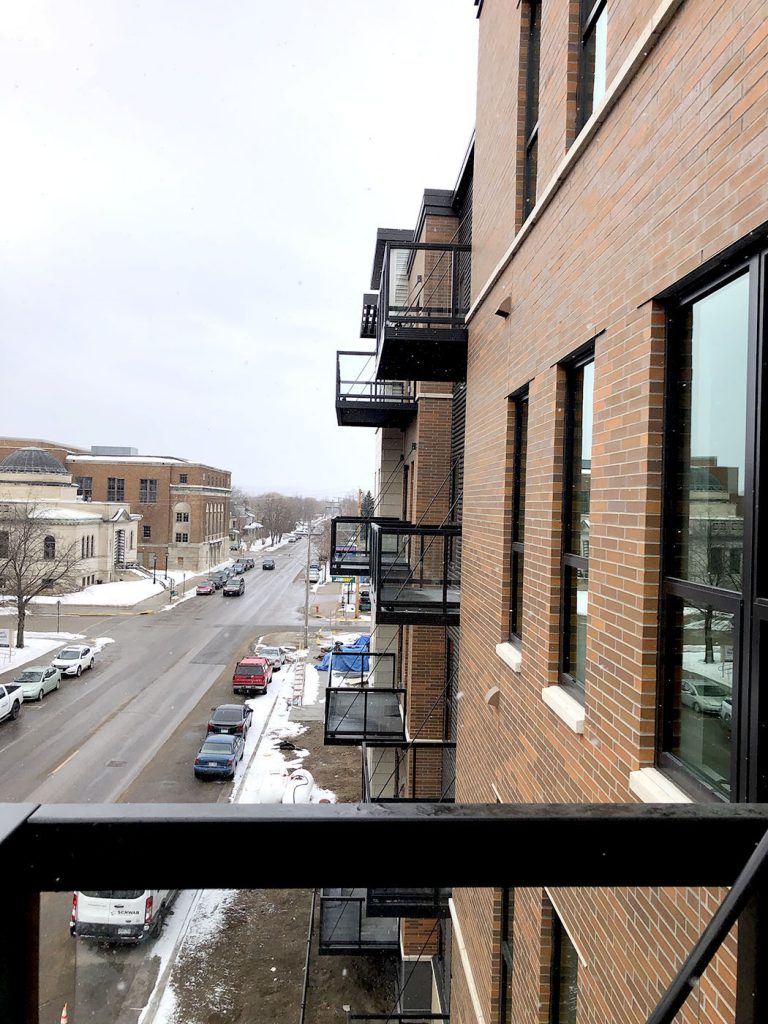
According to Tom Hoseck, Main Square Winona’s lead property manager, the complex will have two primary buildings: the Landmark on Main and 5th Streets and the Cornerstone, which is on Main and 4th.
While Landmark is housing with one, two- and three-bedroom units, Cornerstone also has space for retail offices.
Amenities like a fitness center, rooftop terraces and meeting room will be shared between residents, Hoseck said.
Speaking about the draw for living at Main Square, Hoseck mentioned proximity.
“Living here gives people everything they could need within walking distance,” Hoseck said. “Plus, we’ll be adding conveniences for residents like an orthodontist, hair salon and a walk-in clinic. We want people who live here to feel like they never have to leave.”
A complex marketed as luxury must live up to that in rental prices.
An average one-bedroom rental in the Landmark building runs $1,300 per month For the Cornerstone building, a one-bedroom suite begins at $875 a month.
In a city that’s predominantly college students, how do these rates stack up to dorms?
And would the apartments appeal to college students?
According to Paula Scheevel, Winona State University’s director of housing and residence life, the dorms are a better price.
Unlike the price of the new apartment complexes, the rates of dorms were decided by the original cost to build and maintain the dorm.
In WSU’s Quad, which is a building made up of four separate other dorms, an average room is $2,800 for the academic year.
While college students pay off all charges in chunks, the average rent would come out to $350, per the housing and residence life yearly budget.
They also have stipulations through the MinnState system that all dorms must be built to withstand 100 years of residents and be paid off in 20 years.
Because Scheevel has been in her position for 16 years, she also has data on retention rate in the dorms.
“Thirty percent of people who live in res halls are returners, and that adds up to about one third of the overall student population,” Scheevel said.
She expounded on why she thought the university had those numbers.
“It’s ultimately about the value of the dollar. Our convenient location, dining plan and community in res life makes it a top choice.”
In terms of how the dorms stack up to the new apartments, Scheevel said she didn’t think Main Square Winona aimed to be for college living.
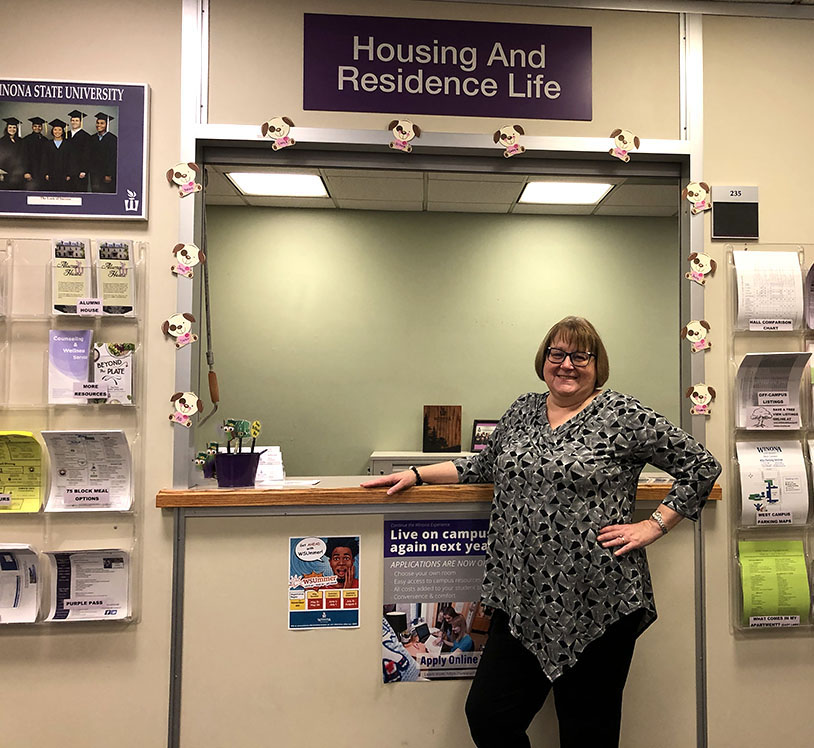
“To my knowledge, the complexes are geared toward those who are well-off and looking for housing not directed at college students,” Scheevel said.
To live in the Cornerstone, which is the cheaper of the two luxury complexes, for one school year, it would be a 150 percent increase over residence halls at the university.
And that’s just an average dorm room cost.
By comparing the cost of Main Square Winona to the most upscale dorms on campus, Kirkland-Haake, an average room in the four-person complex is $3,650.
Calculated out, monthly rent from a dorm to this luxury complex would increase by 91 percent.
Depending on where you live, you get what you pay for.
Question is, who’s willing to pay that much?
Winona State international student talks personal experiences
The stress and fear associated with the choice of college is something that plagues almost every student.
Joel Odoom’s decision was more nerve-wracking than most as an international student in Minnesota.
Odoom was born in Ghana, Africa, and moved to Qatar in 2010 where his family still lives.
He had to adapt to a new environment and a new language, English, which he uses as his dominant language.
Leaving Ghana, his home country, proved difficult as his move would be permanent.
“Moving to Qatar was a real shocker for me,” Odoom said. “Leaving a place where I was comfortable with people with the same cultural background to going to a foreign place for me was very hard.”

Stepping outside of his comfort zone tested Odoom. He said it helped him experience life in a new way.
“It was a new opportunity and it helped me very, very much,” Odoom said.
Past obstacles moving to a “foreign” place early in life served as a factor in his decision to come to the US for college.
“I thought to myself, where’s the best place I would feel comfortable with?” Odoom said. “I thought the U.S. It seemed like the land of opportunities.”
He highlighted a few opportunities such as experiencing what the US will be like outside of what he sees in movies and television.
Why Minnesota?
Odoom said he wanted to stay near his aunt and uncle and his extended family who live in the twin cities and have a safety net if things don’t turn out the way he envisions them.
“I wouldn’t have been able to do it if I didn’t have family in Minnesota. My parents didn’t want me to struggle.” Odoom said.
Why Winona State University?
Odoom said that he wanted to find a college that was affordable, dense with diversity and international students to make him feel more accepted and supported in the path he wanted to take in school.

Odoom said he didn’t want to feel like an outcast.
He wanted to become his own person, branch out and discover new things.
“I told myself, let me find the friends who I truly believe are my friends. It doesn’t matter if they’re from the same country as me or if they’re international or not.” Odoom said. “I’ll just do whatever to make myself feel comfortable.”
After being at Winona State for two years, Odoom’s perspective and expectations changed for the better.
He explained that he gets along with everyone.
People don’t see him as an international student, and he doesn’t feel as if he is confined to a clique.
“I feel as if I am an anomaly,” Odoom said.
Odoom hinted at the reason may be because he doesn’t have a “stereotypical” accent that other international students have.
“I feel as if they would treat me differently if that was the case.”
Finding A Voice
I wake up, It’s Thursday.
The Winona State University women’s basketball team leaves today at 3:30 p.m. for games in Marshall, Minnesota and Sioux Falls, South Dakota.
I, being the radio guy, cannot miss the bus as the men’s team does not arrive before the start of the women’s game.
Time to pack my bag and prepare for the fourth weekend on the road this season.
I’m a bit nervous as I’ve never really got on talking terms with any of the players.
They all do their thing while I sit there quietly and mind my business.
I’ve covered the WSU basketball teams for three years while working at the campus radio station, 89.5 KQAL, so you’d think I’d have a better relationship than this.
It’s just not the case.
I get to the bus stop, say hello to Coach Scott Ballard, and take my seat.
I’ve debated sparking conversation, but I don’t feel like the team is interested in my small talk, plus I feel like they discuss basketball enough as it is already.
Hours later, we arrived in Marshall.
They eat their team meal together at Texas Roadhouse or Pizza Ranch, I usually eat off to the side, then we head to the hotel for the night.
I’ve said two words since the start of the trip.

Being secluded and keeping to myself isn’t what I’d like to be doing, it just happens.
The nerves of saying something stupid or sitting where someone else wants to sit triggers my anxiety.
My boss and longtime radio professional Doug Westerman explained that it’s not unusual for radio personal to be introverts off the air.
“They just want that high energy ‘Hey everyone! Blah blah blah we got a great day in store for you!’ then all of sudden you’re walking down the hallway and they give you a nervous ‘hi.’”
How could someone be an introvert and be on the radio where you talk for hours?
Pat Broe, former KQAL Program Director and Sports Director, described the flipping of the switch from off-air to on-air as being trapped in a corner with no way out.
“There’s something about when that red light comes on that you have to start, you can’t do anything but be that person,” Broe said. “You’re trapped in a corner, you are live on air, there’s thousands of people listening to you, and you have to figure out a way to entertain them.”
Sounds pretty intense, but I found that to be accurate.
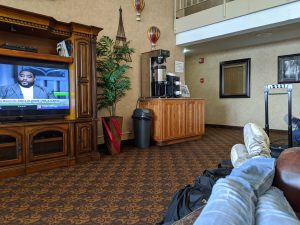
In the morning I checked out of my room at 11 a.m.
I sit in the hotel lobby until we leave for the game at 3 p.m.
5 o’clock rolled around and I plugged in the comrex, got my mics into position, and waited for my producer Ryan “Baby Shaq” Mandli to send the call my way.
“That’s going to do it for the Warrior Tip-Off Show as Buck Wallert is waiting in the R/A Facility in Marshall Minnesota, take it away Buck,” Baby Shaq said.
And I picked it right up with, “Welcome to the R/A Facility over here in Marshall Minnesota as we have a good match up in store for you tonight as your Winona State Warriors take on….”
Like that flip of a switch, I was in a zone.

From saying two words in almost an entire day, to rattling off names, stats, and match up history, you would think I knew these players their whole lives.
Anything to paint the best picture possible for the listeners back home, as according to Doug Westerman, “radio is the theatre of the mind.”
Not talking at all, to saying thousands of words, then right back to not talking after the game bothered me.
It just didn’t make sense.
Mike Martin the original KQAL radio jock and now the guy who keeps the radio station going, met with me the next day and explained how radio gives you confidence.
“It makes you think on your feet, spontaneously, and being kind of a shy kid, you’re doing it in a room by yourself, so that kind of helps too,” Martin said. “You’re talking to people, but they aren’t right in front of you. You’re by yourself, but you’re not talking to yourself, there’s maybe hundreds of people.”
Thinking of the amount of people listening to me makes me even more nervous, do I sound okay? What if I say something I shouldn’t or panic?
And panic is just what I did the first time on air.
Pat Broe reflected on the first time we were thrown into the spotlight.
“It’s a day you and I will never forget. I was producing and co-hosting, you were hosting, and neither of us knew what the heck we were doing. TJ Leverentz and Tyler Jeffries kind of just gave us the keys and let us go and let us fail, and we did,” Broe said. “I think we went to commercial 25 or more times; we didn’t turn our mics off one time, and there might have been a word that the FCC doesn’t like that got on the air. Basically, anything that could have gone wrong went wrong.”
That was just over three years ago.
Now when I go on air, I have fun with it, take it and run.
Notes or no notes I was going to think of something.
“It’s so funny too, I thought I was prepared for that day, I thought I had enough information to put a show together, but I was not even remotely close,” Broe said. “Now putting together a pregame show is easy.”
But it’s not always as easy as he says, when you’re having a bad day, you still have to be happy go lucky on air.
Martin explained this well when talking about his experience as a disc jockey.
“I had been just having a horrible bad day or something, and I was just grumpy…. Then I flip the mic on and immediately I’m cheering and I gotta play the role, I gotta play the radio guy,” Martin said. “Flipped the mic off again and went back into grumpy mode. This other guy in the control room with me said ‘how did you do that, how did you just change personality like that.’ And I’m just like ‘hey, that’s what they pay me to do.’”
I receive $20 for each game I call, as well as the free hotel rooms and couple of meals.
But, the radio has given me a voice, so I’d say I’m living the dream.
Car-delivery service attempts to drive others out of business
For residents of Winona, Minnesota, a college city on the
Mississippi, the possibilities on how to get from Point A to Point B are plentiful.
The city offers a four-route shuttle bus system, a taxicab company and a recreation center equipped with canoes, rollerblades and bicycles.
If all else fails, a scenic stroll can get someone almost anywhere worth going in about 20 minutes.
One thing Winona didn’t have until 2018 was Lyft, a direct driver-to-rider, cashless car service controlled solely by cell phones.
As part of the Rochester Area radius, the service extends from Red Wing to Albert Lea.
The first step in the Lyft process is to create a rider or driver profile.
Once the profile is created, users input a debit or credit card which allows money to be withdrawn as a rider and deposited as a driver.
From there, riders can type in their point for pick-up and drop off.
What happens next?
The nearest driver will be on their way to the designated pick-up point.

While the idea of getting in a stranger’s vehicle may make some
uneasy, Lyft implemented the ability for riders and drivers alike to watch a digitized progression of the ride.
Lex Lea, a Winona State University junior (in the featured photo above), jumped at the chance to join Lyft this past summer and make money doing an enjoyable task for her: driving.
She’s been a driver with Lyft for six months.
Lyft ran a background check, driver’s record check and confirmation of her license and insurance.
Every element of the application is approved individually. Drivers cannot begin until all parts have passed Lyft’s driver screening.
Lea said Lyft periodically offers instructional videos to help prepare drivers to handle situations with riders.
While she likes Lyft for its flexible hours, Lea said she uses it for fast cash and not as her primary income.
It can take a considerable amount of drives with the minimum rate that starts at $3.64 and goes up per mile.
Part of the payment for her though is the entertaining riders.

One of Lea’s favorite interactions came from a group of drunken girls who “hyped her up” by persistently calling everyone in the car, Lea included, “on point and so pretty.”
“It’s interesting that drunk people always think that they’re found to be annoying by sober people. I don’t mind, though. It’s entertaining and much better than sitting at home.”
Kaitlyn Tenney, a Winona State senior, started with Lyft in October as she saw her dad go through the process, which she described as “super easy.”
When Tenney drives, she said she prefers Thursday to Saturday nights until bar close around 1 a.m.
Despite drunken antics, Tenney said the service makes sense for Winona.
“It’s a useful service for the bar scene and convenient because
almost everyone has a phone,” Tenney said.
According to Tenney, she’s had riders who use it if they’re unable to drive and need to get to work, pick up groceries and get to
treatment groups.
As more people learn of the service, Lyft may become the primary way to get around Winona.
WAPS does not meet goals; no change for this year
The Winona Area Public Schools school board met on Thursday, Nov. 21, for a hearing about the Worlds Best WorkForce and regular business after.
Maurella Cunningham, director of learning and teaching at the district office explained the results from the 2018-19 WBWA plan and described the WBWA plan for 2019-20.
In the 2018-19 school year, the district met two of their seven goals detailed in the 2018-19 WBWA plan.
Those two goals were to decrease the reading proficiency score gap between white students and students of color and American-Indian students and the district was able to raise enrollment in preschool.
The five goals not met included the four-year graduation rates from Winona Senior High School and the Winona Learning Center.
The goal for Winona Senior High School was to increase graduation rates from 93% to 94%. The rate ended up decreasing from 93% to 91.9%.
Another goal was to close the gap between white students, students of color and American-Indian students on the math proficiency part of the Minnesota Comprehensive Assessments.
“In Math, the difference in percent proficient on the MCA assessment between white students & students of color and American Indian students will decrease from 26.7% to 20%, for all grade levels tested,” the 2018-19 WBWF plan read.
Other goals not met included kindergarten letter sounds, third-grade reading level increase, and average ACT scores increase.
Cunningham described WBWF goals for the 2019-20 school year.
The basis of most of the goals did not change from the 2018-19 WBWF plan to the 2019-20 WBWF plan.
For example, the goal to close the gap in math proficiency MCA scores between white, colored and American-Indian students stayed the same. The only part that changed was the starting point to reflect the increased gap from the previous year.
“In Math, the difference in percent proficient on the MCA assessment between white students & students of color and American Indian students will decrease from 25.3% in 2019 to 20% in 2020, for all grade levels tested,” the 2019-20 WBWF plan states as the goal.
The only goal that changed was the four-year graduation rates.
For the 2019-20 WBWF plan, the goal is to have an increase in four-year graduation rates at the Winona Senior Highschool from 93% to 94% and an increase from 13.2% to 14% at the Winona Area Learning Center.
One goal was added to the 2019-20 WBWF plan.
The new goal is to have high school juniors who take a college or career readiness assessment to have scores no lower than 85%.
The board will hear a revised version of the 2019-20 WBWF plan on Thursday, Dec. 5.
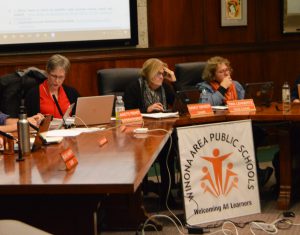
School Board Chair, Nancy Denzer said she looks forward to seeing the plan written in a meaningful way.
“I really want to see some SMART goals and things that we can achieve and I really want to see the whole Worlds Best Workforce written in a way that is meaningful,” Denzer said.
SMART goals are goals that are specific, measurable, achievable, realistic and timely.
In the regular meeting, the school board heard from speakers on a variety of topics.
“We want staff members to present not necessarily administrators,” Denzer said.

One presentation Denzer said she enjoyed was a report from staff members about the progress of a new program called Positive Behavior Interventions and Supports.
Each school in the district has at least one teacher heading the program in that school. Each is seeing tremendous results in the beginning stages of implementation.
The school board also discussed the process of adding a student chair to the board.
School Board Clerk Michael Hanratty brought the idea to the board after attending the annual conference last year and meeting other district’s student representatives.
“He got excited about it and wanted to do it,” Denzer said. “So we are going to shepherd it in and see what happens.”
The next school board meeting will be Dec. 5 at 6 p.m. at Winona City Hall.
Parking causes issues for Friendship Center
The Friendship Center in Downtown Winona needs more parking as it is the number one complaint from members.
The issue comes mostly because the Friendship Center serves the senior citizens of the area, many of whom have a harder time walking long distances or making it across the street in the time allowed.
Roxy Kohner has been a member of the center for almost 11 years. She said sometimes she will come to the center an hour before an event to wait out a close enough parking spot.
“I have driven by and without a place to park I had to turn around and go back because there wasn’t anything within the walking distance that I can do,” Kohner said. “I have also staked out parking. So I have come an hour ahead of time and I will park and do something in my car till I can watch and see someone pull out.”
Malia Fox, director of the Friendship Center, said this is the most frequent complaint the center gets.
A report from 2018 state there is adequate parking for the City of Winona.
The report titled “Parking Study: Downtown Winona” was created by Walker Consultants. They studied an area of 42 blocks between the Mississippi River, Winona Street, Broadway Street and Kanas Street.
Walker Consultants found that in the study area there were about 4,030 spaces available of which about 3,205 spaces were for public use.
Parking continues to be a problem for the Friendship Center despite the findings in the Walker report.

Winona Major, Mark Peterson, said parking has been an issue for the center since it started 40 years ago.
“The complaints are very real which is why the city has been looking at a solution to solving the problem,” Peterson said. “The past couple of years the city has seriously been considering moving the center.”
There will be a meeting on Nov. 13 to discuss parking further.
There was talk from the city about knocking down the old middle school auditorium and creating a parking lot there.
According to Kohner, that would not fix the problem.
“That is a band-aid because many of us have limited mobility. So even if we do have parking you’re talking two blocks away,” Kohner said. “I won’t be able to go two blocks either. I can go a block if a stretch it, half a block is perfect.”
One quasi-solution the center had was making a deal with Wesely United Methodist Church which is next door to them. The Friendship Center can use the church’s parking area as long as the church does not have an event going on.
The parking the church said the center can use is not reserved for the Friendship Center. It is public parking.
The center has a membership of 1,000 people with an average daily attendance of 125. They also have staff coming in and out of the building every day.
According to Fox, the Main Street Square Development across the street has hindered their membership.
“In the last 6-8 months that this development has been occurring, we are watching our numbers drop for the first time in 25 years,” Fox said.








